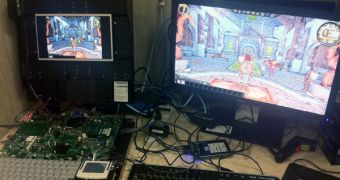Users that have been stuck with an Atom based computer for more than just a few minutes know just how sluggish Intel's low-powered processor can feel when it comes down to even the simplest of tasks, so, many of us, have been eagerly awaiting for AMD's answer in this market segment, the Brazos platform, the very first performance previews making their way into the Web.
One of the many previews available right now comes from Anandtech, the website having at their disposal an AMD E-350 APU, the highest Brazos performing APU, that comes with a dual-core design, both of these cores being run at 1.6GHz.
This chips also integrates Radeon HD 6310 graphics, features 80 GPU cores run at 500MHz, its TDP coming to just 18W, Anandtech saying the power consumption of the entire test system (including 1366x768 LCD panel) came around 30W while playing games and around 25W while encoding H.264 on the two Bobcat cores.
As far as pricing is concerned the E-350 is to be used in $400 nettops and notebooks in the $400 - $500 range thus competing with expensive Atom based netbooks as well as Pentium dual-core and low-end Core i3 notebooks.
According to AMD's goals, the Brazos platform should deliver well beyond 6 hours of battery life making it a competitor for Atom based solutions in this regard as well.
Although that claim is harder to be put to the test without any notebooks (or netbooks) built on the Brazos platform available for testing, Anandtech did manage to offer us a pretty thorough performance preview of this platform, the E-350 being faster than an Atom D510 CPU (especially in single threaded tasks), although it falls significantly behind a dual-core Pentium E2200 processor.
When it comes down to its integrated graphics however, things look definitely better for AMD, the E-350 even managing to surpass the Intel HD graphics solution built into a desktop Intel Core i5 661 processor (when games aren't CPU bound that is).
End of it all, I can say that things definitely look good for the Brazos platform, especially if AMD manages to get manufacturers on their side as the most important thing in the netbook and notebook segment isn't performance by itself, but the whole package, including build quality, aesthetics, ergonomics and battery life.

 14 DAY TRIAL //
14 DAY TRIAL //